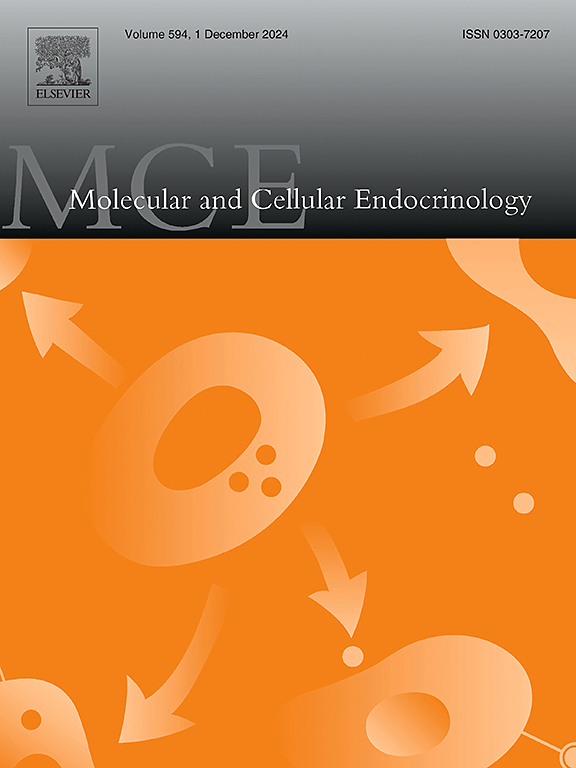性别发育差异46,xy个体中SRY变异的功能分析
IF 3.8
3区 医学
Q2 CELL BIOLOGY
引用次数: 0
摘要
在哺乳动物中,雄性性发育是由性别决定区- y (SRY)基因的表达启动的。SRY含有一个高度保守的高迁移基团(HMG)盒子,这是DNA结合和活性所必需的。SRY变异引起性发育差异(DSD),占46,xy性腺发育不良病例的10-15%。在这里,我们介绍了在46,xy DSD患者中发现的五种SRY编码变体的功能分析。四个变体(p.p asp58glu、p.p arg75lys、p.p met85thr和p.p arg86ter)位于HMG框内,一个变体(p.p tyr198cysfs *18)位于c端结构域。我们在体外对这些变异的影响进行了功能表征,利用响应SRY的SOX9调控元件研究了SRY的定位和交互激活活性。我们发现三个变体(p.Met85Thr, p.g arg86ter和p.t tyr198cysfs *18)降低或消除了交互激活活性,表明它们具有致病性,p.g arg86ter变体在我们的分析中未检测到,而p.Met85Thr变体显示出减少的核定位。然而,尽管该变异也影响了局部定位,但新型细长p.t y198cysfs *18变异活性降低的致病机制尚不清楚。相比之下,另外两个变体(p.Asp58Glu和p.Arg75Lys)对核定位或交易活性没有明显的影响,尽管硅分析预测DNA结合受损。综上所述,我们的数据确定了这些SRY变异的可能致病性,并提高了确诊患者的诊断确定性。本文章由计算机程序翻译,如有差异,请以英文原文为准。

Functional analysis of SRY variants in individuals with 46,XY differences of sex development
In mammals, male sexual development is initiated by the expression of the Sex-determining-Region-Y (SRY) gene. SRY contains a highly conserved high mobility group (HMG) box essential for DNA binding and activity. Variants in SRY cause Differences of Sex Development (DSD), accounting for 10–15% of 46, XY gonadal dysgenesis cases. Here, we present the functional analysis of five SRY coding variants identified in patients with 46, XY DSD. Four variants (p.Asp58Glu, p.Arg75Lys, p.Met85Thr, and p.Arg86Ter) are located within the HMG box and one variant (p.Tyr198Cysfs∗18) located in the C-terminal domain. We functionally characterise the impact of these variants in vitro, investigating SRY localisation and transactivational activity using SOX9 regulatory elements that are responsive to SRY. We find that three variants (p.Met85Thr, p.Arg86Ter, and p.Tyr198Cysfs∗18) have reduced or abolished transactivational activity suggesting these are pathogenic, with the p.Arg86Ter variant undetectable in our assays and the p.Met85Thr variant exhibiting reduced nuclear localisation. The pathogenic mechanisms underlying reduced activity of the novel elongated p.Tyr198Cysfs∗18 variant is however unclear, although this variant also affected localisation. In contrast, two additional variants (p.Asp58Glu and p.Arg75Lys) had no discernible effects on nuclear localisation or transactivational activity despite in silico analysis predicting impaired DNA binding. Taken together, our data establish the likely pathogenicity of these SRY variants and improve diagnostic certainty for the patients in which they were identified.
求助全文
通过发布文献求助,成功后即可免费获取论文全文。
去求助
来源期刊

Molecular and Cellular Endocrinology
医学-内分泌学与代谢
CiteScore
9.00
自引率
2.40%
发文量
174
审稿时长
42 days
期刊介绍:
Molecular and Cellular Endocrinology was established in 1974 to meet the demand for integrated publication on all aspects related to the genetic and biochemical effects, synthesis and secretions of extracellular signals (hormones, neurotransmitters, etc.) and to the understanding of cellular regulatory mechanisms involved in hormonal control.
 求助内容:
求助内容: 应助结果提醒方式:
应助结果提醒方式:


